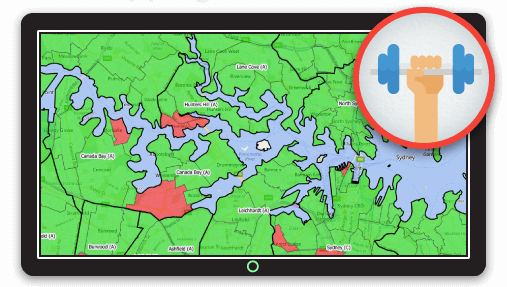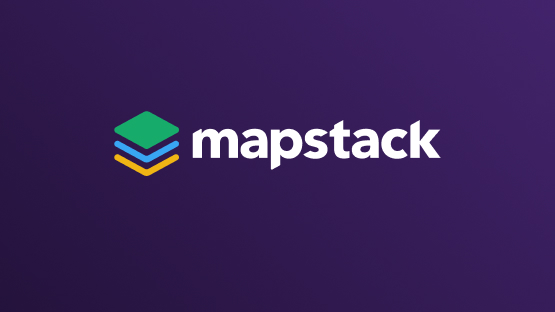Recently, we noticed more and more franchise brands using Mango to power up their sales and help manage their territories.
F45 Training, for example, currently reigns as one of the fastest growing fitness franchise brands in the world. According to an April 2018 press release, they’re selling up to 35 studios worldwide each month - a hugely impressive growth rate.
We wanted to find out why online territory mapping was becoming so popular with franchise brands, so we scoured the available data and made some phone calls. What we found during our research gave us a new perspective and brought us to the conclusion that now is the best time for other franchise brands to jump on the software, too.
The pain point
For franchise brands, visualizing available territories and showcasing them to potential franchisees is one of the biggest headaches that mapping software like Mango solves. Mango also lets users upload data onto their maps to make them interactive.
This means that users can add vital insights about each territory, such as average income and population size, ensuring potential franchisees have relevant information to make an informed choice, much like in the example below.

On the above image of a territory map for a fictional fitness franchise brand, you can see how data has been added and color coded to let the end user know which territories are available and which are taken. The percentage of people living in each area earning more than $2,000 has also been added to the map, shown in the pop-up box in the bottom left corner.
For a fitness franchise, this gives insight into the local market, and could even be expanded to include details like public transport links, density of office buildings and competing businesses. This brings a territory to life, providing insights that make a decision easier for people looking to start a new franchise outlet. Click on the map to see it in full.
Fixarounds
We asked some of our customers about the methods they used to solve the headache of territory management and presentation before they found Mango. The solutions we uncovered were mainly hacked-together, and invariably involved less-than-ideal workarounds using Google Maps.
For example, some used zip codes pumped into Google Maps, which show up on the screen ringed inside a red line. This is a fairly decent way to visualize a singular zip code, but is essentially useless if the franchise territory is larger and consists of numerous zip codes that need to be put into Google Maps one-by-one.
After all, when a potential franchisee is looking to set up shop, they want to see a territory in its entirety so they can imagine the possibilities. They also want to know about the demographics of a given area, such as the income bracket, any competition there may be or public transport links. All of this data plays a huge role in helping the potential franchisee make the big decision of which franchise brand to choose and where to set up.
Enter online mapping
With Mango’s online mapping software, franchise brands have discovered an easy-to-use digital interface that visualises territories for both management purposes and presenting to potential franchisees. They can also easily upload layers of information onto their maps to make them interactive, informative and engaging.
This process helps turn static, mind-dulling Excel data into a powerful data visualization. This makes it simple for potential franchisees to come to an informed choice about the best territory for their new business venture; everything from which territories are available to which has the biggest potential customer base.
What’s more, there’s no emailing of numerous zip codes or Excel files. Instead, you just send a web link to an online map. The potential franchisee can then use the web map to explore available territories and access background data. And as it’s all housed online, the potential franchisee can simply come back at any time while they’re going through the decision-making process.
The opportunity
So, what does the above information tell us about the future? And why are we so bold as to claim that now is the best time for franchise brands to jump on web mapping?
Well, franchise brands the world over are embracing the latest technologies to improve their sales processes and gain an edge in a fiercely competitive industry. We’ve witnessed this first-hand, and have seen franchise brands of all ilks adopting Mango to power up their operations and sales. We’ve learned that pitching to potential franchisees is one of the most pivotal processes for a franchise brand - mapping software makes this process easier, more visual and more driven by relevant data.
We’re also in a time of great expansion for franchise brands. For example, the world is currently going fitness franchise crazy, particularly for smaller, more specialized group classes such as cycling, yoga or High Intensity Interval Training (HIIT) classes. According to a report by IBISWorld, revenue is set to expand 5.4 percent to $3.7 billion by 2020 in the US alone. This makes fitness franchises the fastest growing sector in the more than $30 billion dollar US fitness industry. And that’s just fitness, nevermind other franchise industries like restaurants, retail and beauty, which are also seeing strong growth.
In fact, according to a report by the International Franchise Association in June of this year, the overall output of franchise businesses is set to increase by 6.2 percent in 2018 to a total of $757 billion.
Put simply, franchise businesses are growing all the time and can get a significant edge on their competitors by adopting territory mapping software to manage and showcase their territories.

